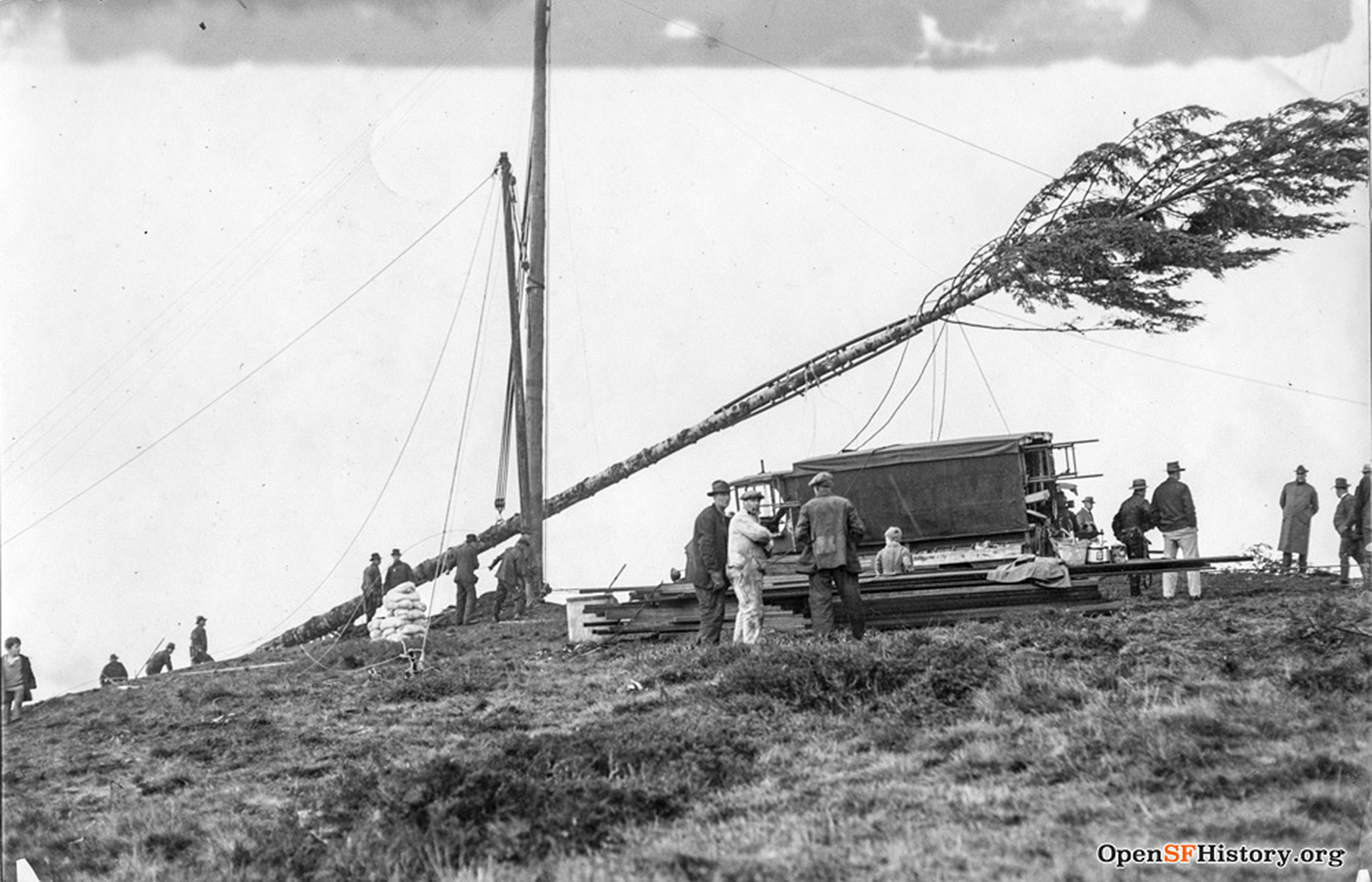Twin Peaks is one of San Francisco’s best-known landmarks, rising more than 900 feet above sea level near the very center of town. Twin Peaks Boulevard, the only road to the top, is open to vehicles from its southern end and forms an asphalt-covered figure-eight around the two hump-like summits, leading to a parking lot and vista point.
That frequently visited spot, with its unobstructed views of at least seven Bay Area counties, has an unusual name: Christmas Tree Point. As with the cities of Santa Claus, Indiana, or North Pole, Alaska, it seems like reindeer must live up there.
It sounds a bit more bucolic than it is—and the name doesn’t apply only to the viewpoint, either. Behind the parking lot, a reddish one-story maintenance building behind a security fence has the fanciful address 1 Christmas Tree Point Road. That name appears on an official database of city streets as well.
At first blush, it’s one of those technical names that most people ignore in their day-to-day lives. Few people in San Francisco refer to the western span of the Bay Bridge as the “Willie L. Brown Jr. Bridge,” and when was the last time anyone called U.S. 101 the “James Lick Freeway”?
In actuality, the moniker actually dates back almost 100 years. In 1927, the San Francisco Examiner sponsored a giant Christmas tree as a kind of marketing promotion. According to OpenSFHistory, the paper enlisted teams to chop down a 120-foot fir in Mendocino, cut it in half for easy transport and drive it to San Francisco for reassembly and civic-sponsored decoration.
It was a huge deal at the time, strung with thousands of lights. Shell Oil constructed a 50-foot “Santa’s Gate” spanning Twin Peaks Boulevard, and Recreation and Park Department Superintendent John McLaren padded the tree with needle-filled branches. According to OpenSFHistory, there was an unveiling ceremony on Dec. 19, 1927, that was nothing short of bombastic.
“At 7:30 p.m. that night, Mayor James Rolph ducked under the overhanging branches and flipped a master switch on a control panel at the trunk base,” the website stated. “The tree could be seen from Marin County to the East Bay. It was illuminated from sundown until three a.m. each night through the holidays.”
The tradition lasted only a few years, and San Francisco has plenty of other officially sanctioned holiday lights. But the association of that vista point with towering conifers remained in the public imagination, as in a 1942 drawing that shows a tree in the center of the parking lot that’s all but begging for some ornaments.
Nearby Sutro Tower—almost candy cane-colored, if you squint—wasn’t constructed until the early 1970s, but archival photos from 1957 show that the taller, slimmer predecessors to today’s stubby gray radio towers were bedecked with lit-up stars.
Further, Christmas Tree Point’s name means the two highest points in San Francisco each have an association with Christianity. The 938-foot-tall Mount Davidson has a 103-foot cross on top, a sectarian landmark that’s been visible across wide swaths of the city’s western side since it was installed in the 1930s. In response to a lawsuit filed by the American Civil Liberties Union alleging a violation of the separation of church and state, the city sold the Mount Davidson Cross to an Armenian American organization, which dedicated it to victims of the 1915 genocide.
And while the snaking curves of Twin Peaks Boulevard are most often seen in car commercials, it’s theoretically possible to ride a sled down the descent. Some 5 inches of snow fell on Christmas Tree Point on Feb. 5, 1976.
